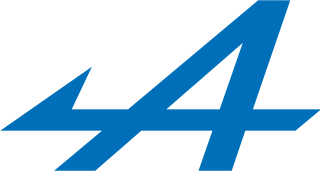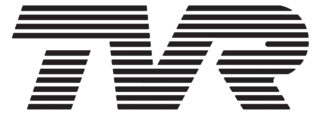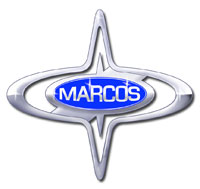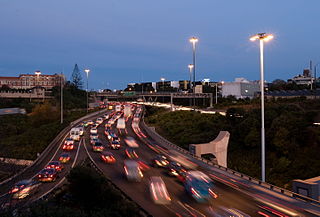Related Research Articles

The Lotus Seven is a small, simple, lightweight two-seater open-top sports car produced by the British manufacturer Lotus Cars between 1957 and 1972.

A kit car is an automobile that is available as a set of parts that a manufacturer sells and the buyer then assembles into a functioning car. Usually, many of the major mechanical systems such as the engine and transmission are sourced from donor vehicles or purchased new from other vendors. Kits vary in completeness, consisting of as little as a book of plans, or as much as a complete set with all components to assemble into a fully operational vehicle such as those from Caterham.
A model vehicle or toy vehicle is a miniature representation of an automobile. Other miniature motor vehicles, such as trucks, buses, or even ATVs, etc. are often included in this general category. Because many miniature vehicles were originally aimed at children as playthings, there is no precise difference between a model car and a toy car, yet the word 'model' implies either assembly required or the accurate rendering of an actual vehicle at smaller scale. The kit building hobby became popular through the 1950s, while the collecting of miniatures by adults started to pick up momentum around 1970. Precision-detailed miniatures made specifically for adults are a significant part of the market since the mid-1980s.

The Société des Automobiles Alpine SAS, commonly known as Alpine, is a French manufacturer of racing and sports cars established in 1955. The Alpine car marque was created in 1954. Jean Rédélé, the founder of Alpine, was originally a Dieppe garage proprietor who began to achieve success in motorsport with one of the few French cars that were produced just after the Second World War, the Renault 4CV. The company has been closely related to Renault through its history, and was bought by it in 1973. Production of Alpine models ceased in 1995.

TVR is an independent British manufacturer of high-end sports cars. The company manufactures lightweight sports cars with powerful engines and was, at one time, the third-largest specialised sports car manufacturer in the world, offering a diverse range of coupés and convertibles.
Caterham Cars is a British manufacturer of specialist lightweight sports cars established in Caterham, Surrey, with their headquarters in Crawley, Sussex. Their current model, the Caterham 7, originally launched in 1973, is a direct evolution of the Series 3 Lotus Seven designed by Colin Chapman. In the 1990s the company made the Caterham 21, a two-seater soft top alternative to the MGF and Lotus Elise,. A track-only car, the SP/300.R, a joint project with Lola was released for customer testing in 2010 and was scheduled for release in 2013. On 27 April 2011, Team Lotus owner Tony Fernandes announced that he had purchased Caterham.

Nash Motors Company was an American automobile manufacturer based in Kenosha, Wisconsin, in the United States from 1916 to 1937. From 1937 to 1954, Nash Motors was the automotive division of the Nash-Kelvinator Corporation. Nash production continued from 1954 to 1957 after the creation of American Motors Corporation.

Marcos Engineering was a British sports car manufacturer. The name derives from the surnames of founders Jem Marsh and Frank Costin.

Lea-Francis is a motor manufacturing company that began by building bicycles.
A knock-down kit, knockdown kit, knocked-down kit, or simply knockdown (KD) is a kit containing the parts needed to assemble a product. The parts are typically manufactured in one country or region, then exported to another country or region for final assembly.

Albion Motors was a Scottish automobile and commercial vehicle manufacturer.

Aluminum Model Toys, commonly abbreviated as AMT, was a Troy, Michigan-based company that manufactured various pre-assembled plastic promotional models starting in 1948, when attorney West Gallogly, Sr. started it as a side business. Later, a variety of kits became very popular. Most of the company's vehicle products were American cars and trucks in 1:25 scale. In the 1970s, hot rods, customs, trucks and movie and TV vehicles were also produced.

The Land Rover series I, II, and III are off-road vehicles produced by the British manufacturer Rover Company. The Land Rover was the first mass-produced civilian four-wheel drive car with doors on it. In 1992, Land Rover claimed that 70% of all the vehicles they had built were still in use.
British Motor Corporation (Australia) was a motor manufacturing company formed in Australia in 1954 by the merger of the Austin Motor Company (Australia) and Nuffield (Australia) Pty Ltd. This followed the merger in 1952 of the Austin Motor Company and the Nuffield Group in the United Kingdom to form the British Motor Corporation. Following further corporate changes in the UK in the late 1960s, BMC Australia was absorbed into the newly established British Leyland Motor Corporation of Australia, the name of which became Leyland Motor Corporation of Australia in 1972, and then JRA Limited in March 1983.

Reynard Motorsport was, in the 1980s, the world's largest racing car manufacturer. Initially based at Bicester and latterly at Reynard Park, Brackley, England the company built successful cars in Formula Ford 1600, Formula Ford 2000, Formula Vauxhall Lotus, Formula Three, Formula 3000 and Indy Car.
Microplas Limited was formed in 1954 in Uxbridge by group of 750 Motor Club members. They were Mike Eyre, Roger Everett, Bill Ashton, Sandy Wemyss, Tony Wemyss, and one other who was associated with the Hunting family. The Huntings were among the first to make reinforced plastics for the British military during World War Two. Microplas had access to this technology. The Mircroplas also traded as Microbond.

Alternative Cars Limited is a New Zealand-based kit car company that manufactures fiber-glass bodied cars based on the 1950s MG TF. The company was founded by Russell Hooper, a medical supply representative, as Kit Kars Limited in 1984. In 1996 Kit Kars Ltd changed its name to Alternative Cars Limited. Initially the company operated from the owner's home, until moving to a small 600 square foot workshop in Auckland.

The automotive industry in New Zealand supplies a market which has always had one of the world's highest car ownership ratios. The distributors of new cars are essentially the former owners of the assembly businesses. At the dealership level they have maintained their old retail chains in spite of the establishment of the many new independent businesses built since the 1980s by specialists in used imports from Japan. Toyota entered into direct competition with those used-import businesses refurbishing old Toyotas from Japan and selling them through their own dealers as a special line. The nation's car fleet is accordingly somewhat older than in most developed countries.

New Zealand had a long history of small garages and vehicle enthusiasts modifying and creating sports and sports racing cars. Out of these interests grew the New Zealand kit and replica car industry with the introduction of fibre-glass car bodies in the 1950s.
Bulgaria's production strongly depended on auto imports from the Soviet block earlier and currently depends on other European and Asian countries. Presently, Bulgaria introduced its own domestic supercar company, SIN Cars.
References
- ↑ Welco and Hughes Limited, photo of Buckler factory and chassis on roadside
- A-Z of Cars 1945-1970. Michael Sedgewick and Mark Gillies. Bay View Books 1993. ISBN 1-870979-39-7